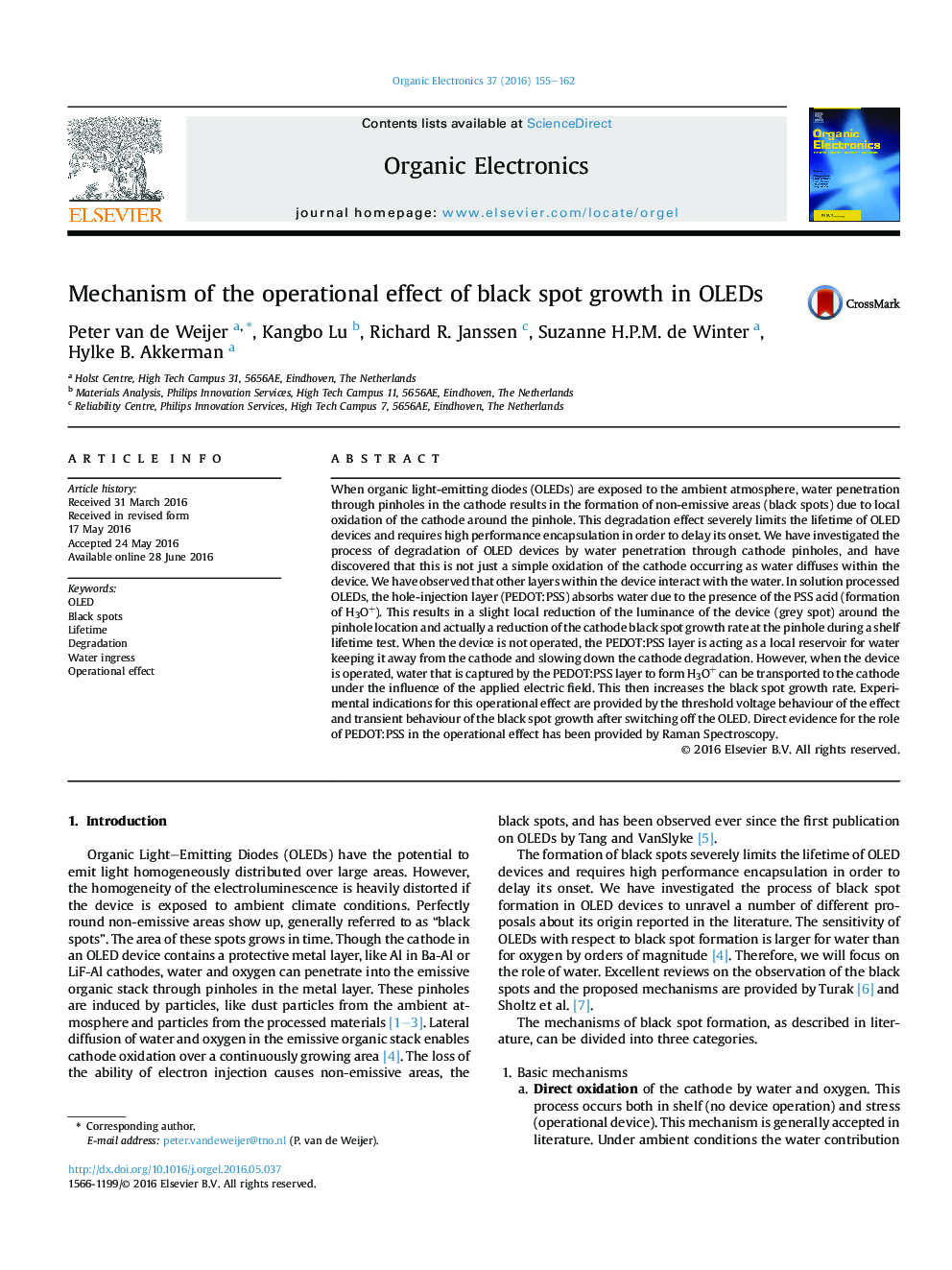| Article ID | Journal | Published Year | Pages | File Type |
|---|---|---|---|---|
| 1264669 | Organic Electronics | 2016 | 8 Pages |
•Black spots in OLEDs with PEDOT:PSS hole-injection layer grow faster during operation than in shelf.•In shelf water penetrating through pinholes is partly captured by PSS to form H3O+.•During operation the applied electric field causes transport of H3O+ to the cathode.•Loss of protons from PSS results in local oxidation of PEDOT, as measured by RAMAN.
When organic light-emitting diodes (OLEDs) are exposed to the ambient atmosphere, water penetration through pinholes in the cathode results in the formation of non-emissive areas (black spots) due to local oxidation of the cathode around the pinhole. This degradation effect severely limits the lifetime of OLED devices and requires high performance encapsulation in order to delay its onset. We have investigated the process of degradation of OLED devices by water penetration through cathode pinholes, and have discovered that this is not just a simple oxidation of the cathode occurring as water diffuses within the device. We have observed that other layers within the device interact with the water. In solution processed OLEDs, the hole-injection layer (PEDOT:PSS) absorbs water due to the presence of the PSS acid (formation of H3O+). This results in a slight local reduction of the luminance of the device (grey spot) around the pinhole location and actually a reduction of the cathode black spot growth rate at the pinhole during a shelf lifetime test. When the device is not operated, the PEDOT:PSS layer is acting as a local reservoir for water keeping it away from the cathode and slowing down the cathode degradation. However, when the device is operated, water that is captured by the PEDOT:PSS layer to form H3O+ can be transported to the cathode under the influence of the applied electric field. This then increases the black spot growth rate. Experimental indications for this operational effect are provided by the threshold voltage behaviour of the effect and transient behaviour of the black spot growth after switching off the OLED. Direct evidence for the role of PEDOT:PSS in the operational effect has been provided by Raman Spectroscopy.
Graphical abstractFigure optionsDownload full-size imageDownload as PowerPoint slide
